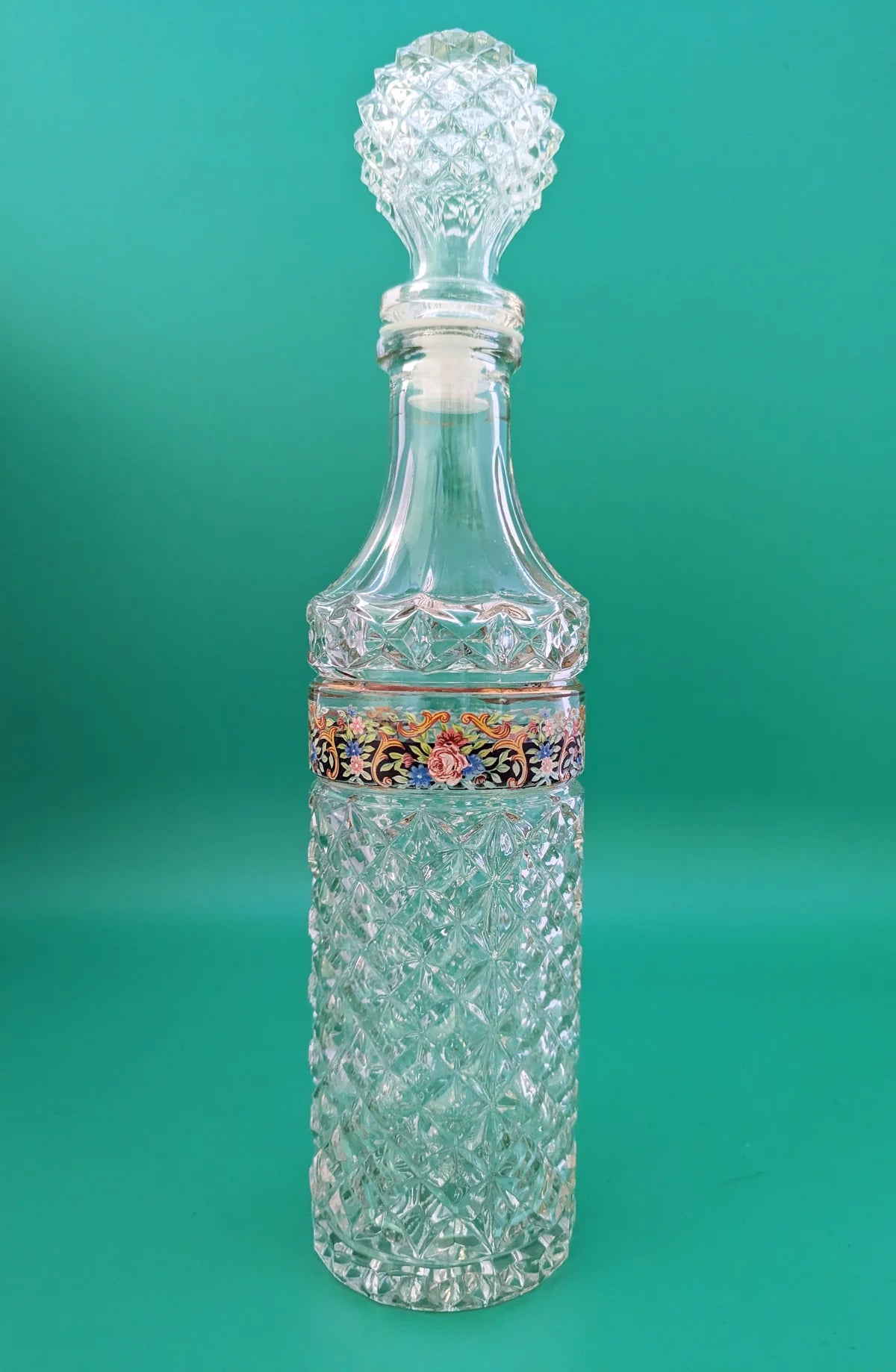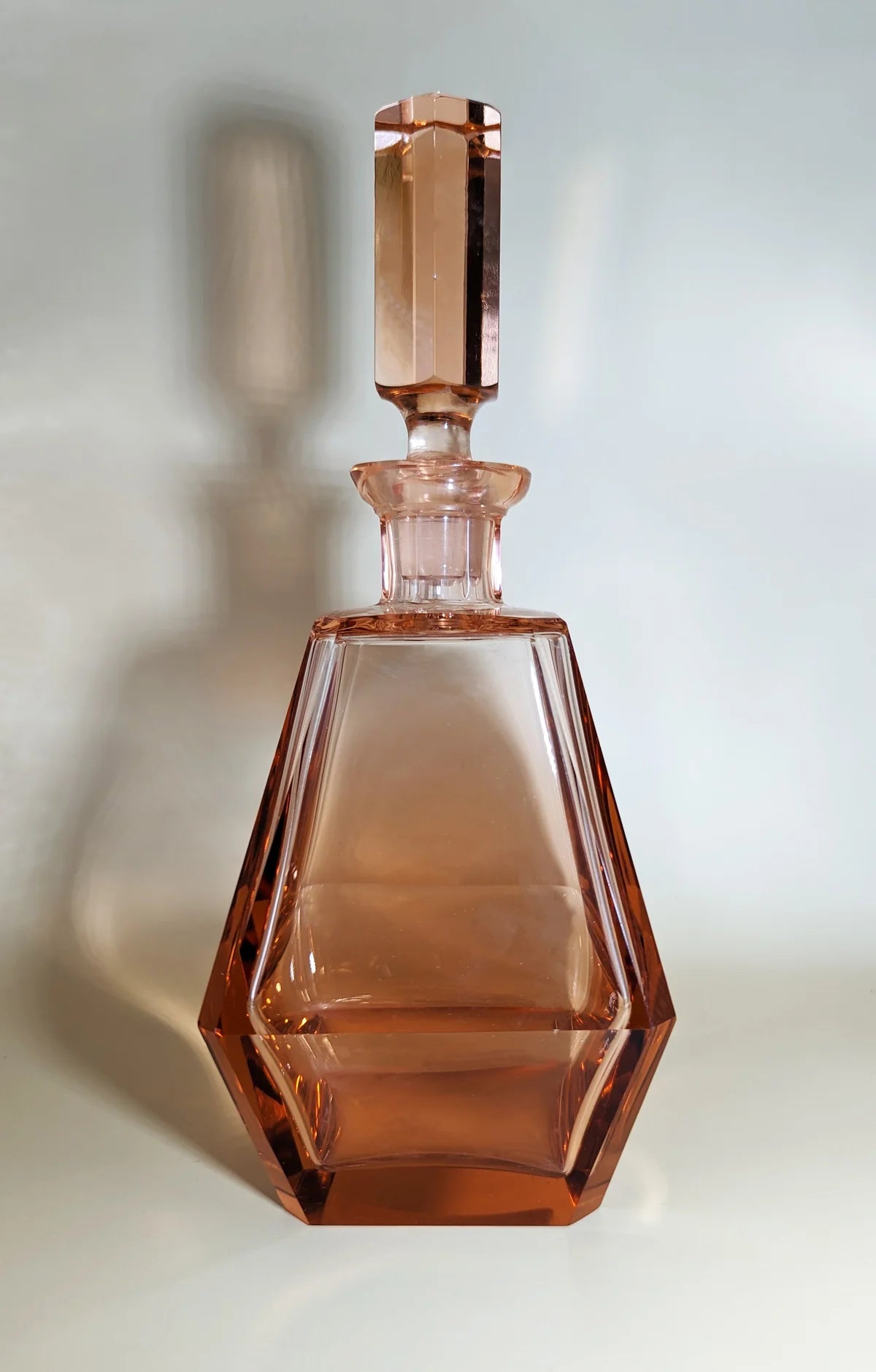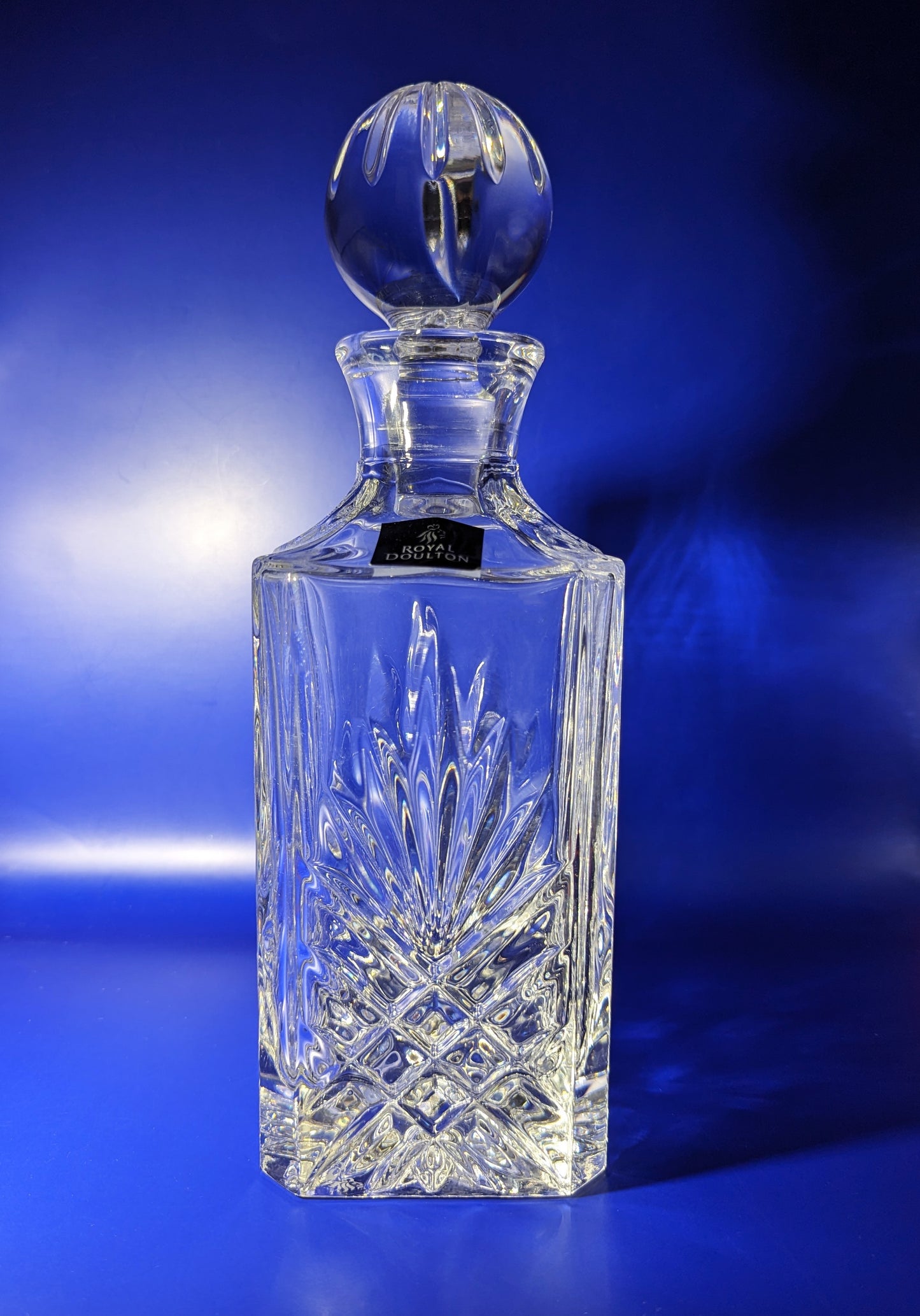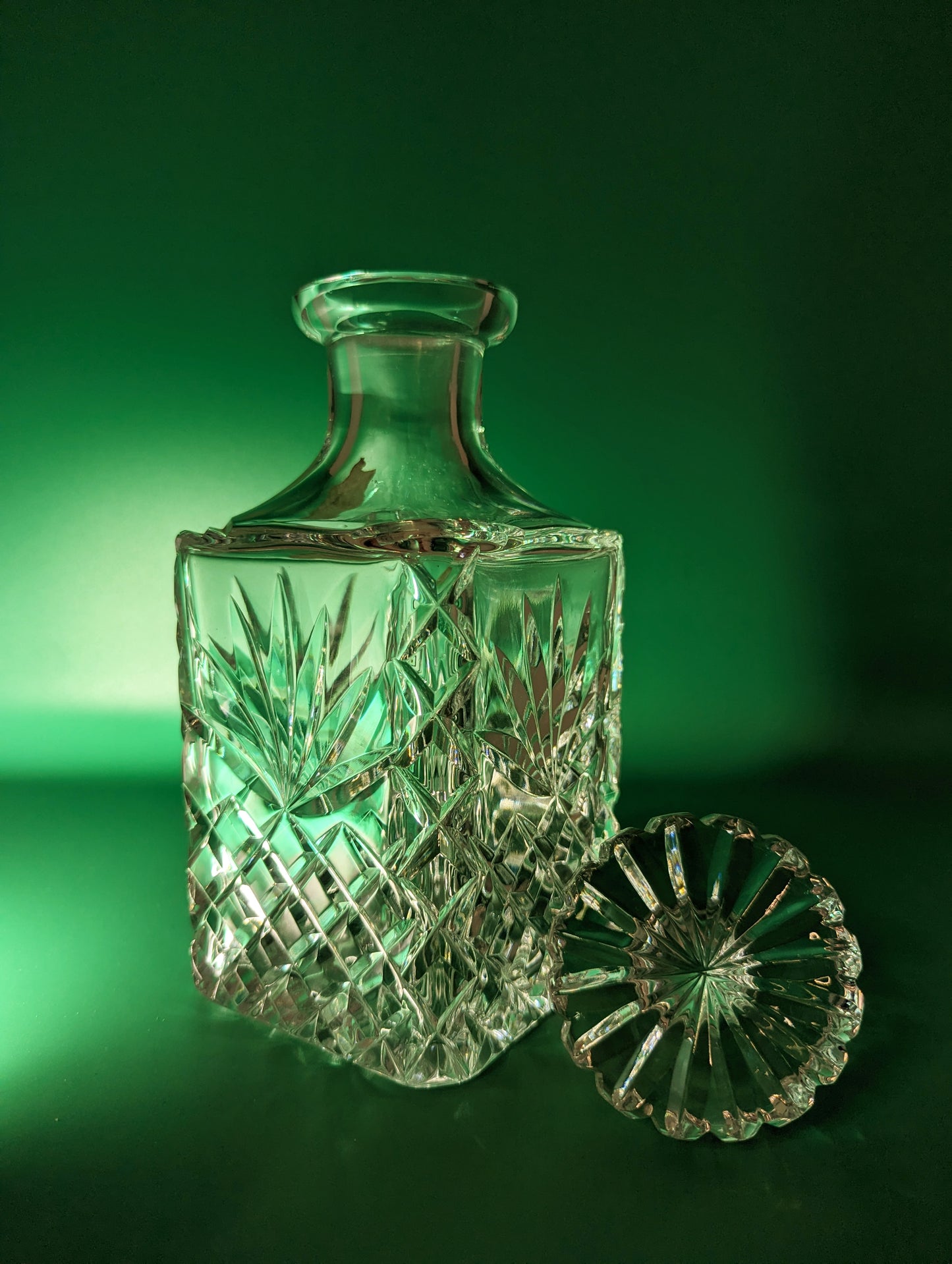

Decanters for Spirits vs Wines
Traditionally speaking, a decanter for spirits is an ornate glass vessel with an airtight stopper. That last part is what separates it from a wine decanter, as a stopper is not always necessary when serving wine. This is because a wine decanter is sometimes only used for aerating and serving rather than storage.

What’s the Purpose of a Decanter for Spirits?
Originally, storage.
Nowadays, storage is a task adequately handled by the bottle that the spirit already comes in. However, beautifully bottled spirits are only a relatively recent development. It wasn’t too long ago that spirits were sold in barrels, forcing retailers to come up with their own solutions for selling the liquid in smaller quantities.
Rather than persevere with whatever these solutions may have looked like, more discerning types started using glass decanters to store their spirits. This trend caught on and now they are an iconic feature of drinks trolleys around the world. This is especially true for fans of vintage styles, as nothing quite evokes 60s vogue like an expertly-etched crystal decanter.
Unlike with wine, there isn’t much to gain in terms of smell or taste from using a decanter for spirits. Decanting wine allows for the flavour-enhancing process of oxygenation, an effective way to achieve what people mean when they say ‘let the wine breathe’. However, in the case of spirits, the impact on aroma and flavour is pretty much imperceptible.
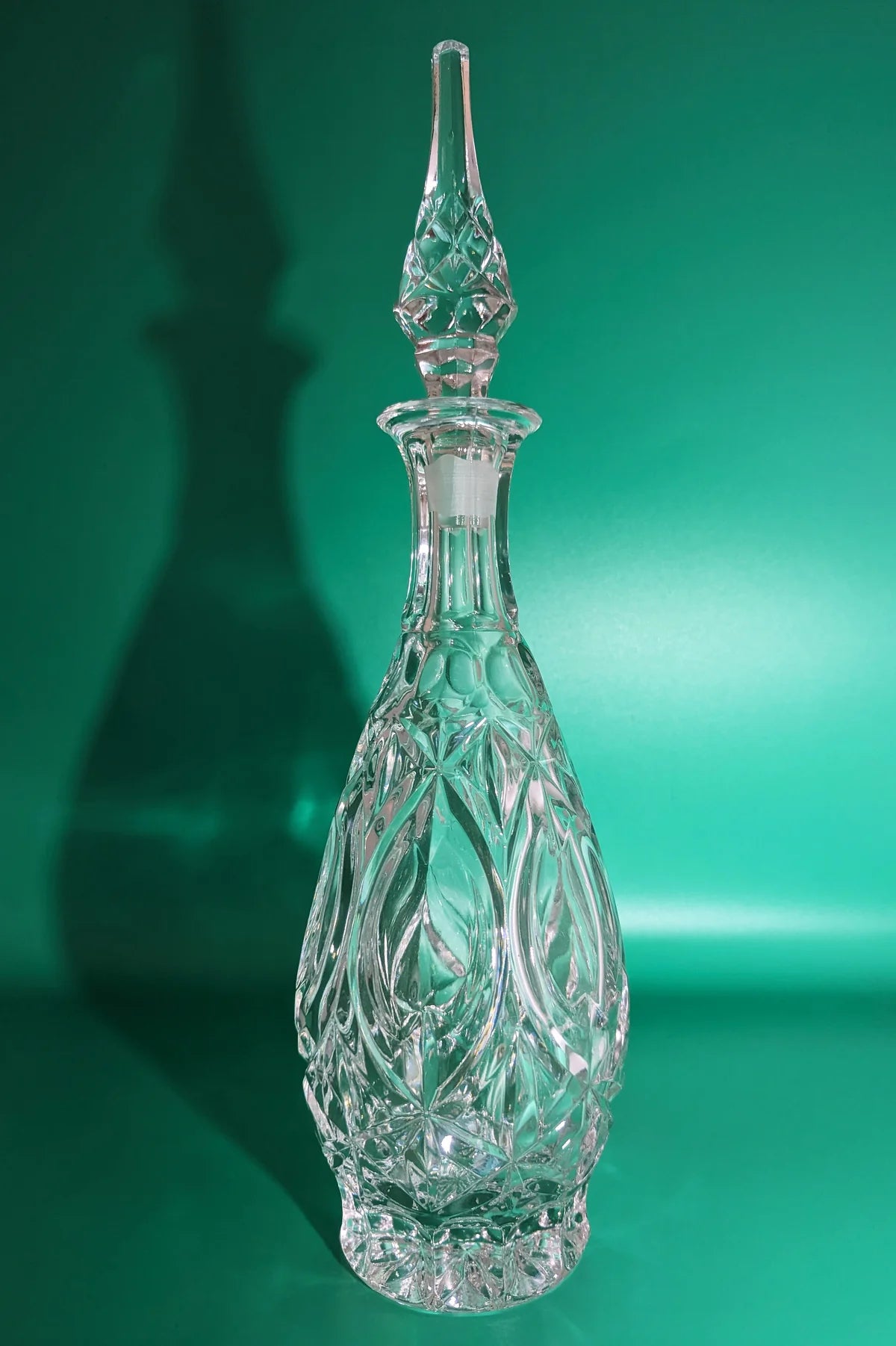
How to Use a Decanter for Spirits
There are three main ways to use a decanter for your spirits: You can go for the fully decorative approach, use it for serving, storing, or all of the above!
Whether you decide to use your decanter for decorative purposes or for serving should depend on whether your decanter contains lead. Many vintage decanters are made with lead crystal which can leach out when alcohol is stored in them. As a result, experts recommend that lead crystal decanters should only be used to serve. In other words, they’re fine for serving guests during a dinner party but should not be used for long-term storage.
If you’re going down the decorative path, you’ve got the largest range of options because the vintage world is entirely open to you. Your home bar setup can get an aesthetic boost and signature style with a range of options from all colours, shapes and sizes. All the while, you’ve got a clear nod to an important part of spirits history.

How to Store Spirits in a Decanter
If you’ve established that your decanter is lead-free, you can enjoy it for both serving and storage. Follow these steps and you’ll be golden:
- Wash it out and make sure it’s bone dry before filling - you want a clean and dry environment for your spirit.
- Grab a funnel to fill it without spilling a drop - don’t worry, the unsightly funnel can be hidden from view after.
- Always leave at least two inches from the top - you don’t want to risk overfilling or making the job of pouring difficult.
- Put the clean and dry stopper in - you want to make sure it’s airtight.

When to Use a Decanter
We’ve already established that decanters are worthy additions to any home bar thanks to their sheer stylishness and spirit-based historical significance. If you’re wondering when you should start serving from one, here’s some inspiration for you:
- You’re hosting guests and want to keep your spirit a secret
No decanter is going to make your spirit taste better, but they can add a little extra excitement to an occasion. If you’re hosting whisky fans, you might want to surprise them with a new favourite and keep the bottle out of sight to conduct a blind taste test. At the same time, a decanter can relieve the pressure of choosing a bottle to serve your guests.
- You’re moderating your alcohol intake
You can use a decanter to measure out your intended serves for a period of time. This will also prevent you from accidentally rushing through entire bottles.
- You’re making your way through a spirit and don’t like the aesthetic of a half empty bottle
Smaller decanters can provide a much more attractive alternative to half empty bottles.

